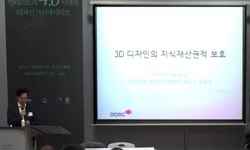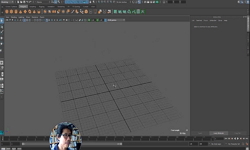3D 영상은 인간이 현실에서 인지하는 현실세계에 보다 근접한 영상을 시청자들에게 제공하고 이를 받아들이는 시청자는 경험 주체로서 현실경험에 가까운 반응을 보이게 된다. 이에 본 연구...
http://chineseinput.net/에서 pinyin(병음)방식으로 중국어를 변환할 수 있습니다.
변환된 중국어를 복사하여 사용하시면 됩니다.
- 中文 을 입력하시려면 zhongwen을 입력하시고 space를누르시면됩니다.
- 北京 을 입력하시려면 beijing을 입력하시고 space를 누르시면 됩니다.
부가정보
국문 초록 (Abstract)
3D 영상은 인간이 현실에서 인지하는 현실세계에 보다 근접한 영상을 시청자들에게 제공하고 이를 받아들이는 시청자는 경험 주체로서 현실경험에 가까운 반응을 보이게 된다. 이에 본 연구에서는 프레즌스는 입체 영상이라는 사실을 지각하지 못하고 프로그램 장면 속으로 빠져 들어가는 듯한 느낌으로 개념화하고, 3D TV와 3D가상현실에서 즉 매체에 따라서 수용자 특성 요인은 어떠한 영향을 주는지, 프레즌스 효과는 어떠한지를 규명하고자 하였다. 연구 결과, 수용자들은 첫째, 3DTV와 가상 현실로 구분되는 매체에 따라서 프레즌스 경험에 차이를 보이고 있었으며, 둘째, 수용자들은 환경적인 요인 즉 사용용이성과 입체시 피로도, 깊이지각에 따라 매체별로 프레즌스 경험의 차이를 나타냈다. 셋째, 수용자의 특성 가운데 몰입경향이나 성별 그리고 나이는 3DTV의 시청 경험에 영향을 주고 있으며, 가상현실에서는 몰입경향은 영향을 미치지 못하고 있었지만, 성별과 나이가 통계적으로 유의한 영향을 주는 변인이었고, 3D TV와 가상현실을 통해서 수용자들은 각성과 즐거움의 효과를 나타냈다.
다국어 초록 (Multilingual Abstract)
3D image provides viewers with images closer to the real world and viewers, main agents which experience, show response nearly close to actual experience. Accordingly, in the present research, presence is conceptualized as sensation of being sucked in...
3D image provides viewers with images closer to the real world and viewers, main agents which experience, show response nearly close to actual experience. Accordingly, in the present research, presence is conceptualized as sensation of being sucked into the scene viewers watch with no awareness of 3D image. The present research plans to investigate what viewers` characteristics affect when they experience 3D TV and 3D virtual world and what presence effects are. The results demonstrate the following three: First, viewers experience different sensation of presence by media such as 3D TV and virtual world. Second, viewers experience different sensation of presence by environmental factors of each medium such as usability, fatigue level while watching 3D image, and sensation of depth. Third, tendency to be immersed does not affect in virtual world, but gender and age are significant factors and viewers present pleasure and awakening through 3D TV and virtual world.
참고문헌 (Reference)
1 이옥기, "프로그램장르와 프레즌스: HDTV를 중심으로" 176-187, 2005
2 이옥기, "프레즌스 측정척도 개발에 관한 연구" 한국언론정보학회 48 (48): 231-256, 2009
3 박정향, "텔레프레즌스 경험이 인터랙티브 광고 효과에 미치는 영향에 관한 연구" 계명대학교 대학원 2004
4 김태용, "텔레프레즌스 경험 확률에 영향을 미치는 수용자 특성에 관한 연구" 한국방송학회 17 (17): 112-142, 2003
5 김태민, "증강현실이 적용된 광고의 개발 방향에 관한 연구" 인포디자인이슈. 한국인포디자인학회 49-59, 2010
6 박경세, "입체영상 특성 및 응용" (58) : 2008
7 오종서, "양방향 TV 프로그램의 사용성 평가:스카이터치 채널을 중심으로" 한국콘텐츠학회 8 (8): 75-85, 2008
8 김종덕, "쌍방향 TV 프로그램의 EPG 디자인 사용성 평가 연구" 한국디자인학회 16 (16): 33-354, 2003
9 감기택, "시각적 피로도에 영향을 미치는 시청거리와 깊이방향의 운동속도" 한국감성과학회 12 (12): 169-180, 2009
10 McLuhan, M., "미디어는 맛사지다" 서울: 커뮤니케이션북스 2001
1 이옥기, "프로그램장르와 프레즌스: HDTV를 중심으로" 176-187, 2005
2 이옥기, "프레즌스 측정척도 개발에 관한 연구" 한국언론정보학회 48 (48): 231-256, 2009
3 박정향, "텔레프레즌스 경험이 인터랙티브 광고 효과에 미치는 영향에 관한 연구" 계명대학교 대학원 2004
4 김태용, "텔레프레즌스 경험 확률에 영향을 미치는 수용자 특성에 관한 연구" 한국방송학회 17 (17): 112-142, 2003
5 김태민, "증강현실이 적용된 광고의 개발 방향에 관한 연구" 인포디자인이슈. 한국인포디자인학회 49-59, 2010
6 박경세, "입체영상 특성 및 응용" (58) : 2008
7 오종서, "양방향 TV 프로그램의 사용성 평가:스카이터치 채널을 중심으로" 한국콘텐츠학회 8 (8): 75-85, 2008
8 김종덕, "쌍방향 TV 프로그램의 EPG 디자인 사용성 평가 연구" 한국디자인학회 16 (16): 33-354, 2003
9 감기택, "시각적 피로도에 영향을 미치는 시청거리와 깊이방향의 운동속도" 한국감성과학회 12 (12): 169-180, 2009
10 McLuhan, M., "미디어는 맛사지다" 서울: 커뮤니케이션북스 2001
11 권중문, "미디어 형태가 프레즌스에 미치는 영향에 관한 연구: HDTV와 아날로그 TV 비교를 중심으로" 계명대학교 대학원 2006
12 Reeves, B., "미디어 방정식" 서울 : 커뮤니케이션 북스 2001
13 김상호, "맥루한 매체이론에서 인간의 위치: ‘기술 우선성’에 대한 논의를 중심으로" 한국지역언론학회 8 (8): 84-121, 2008
14 Prothero, J. D, "Widening the field-of-view increase the sense of presence within immersive virtual environments. Human Interface Technology Laboratory Tech" Seattle: University of Washington 1995
15 Seuntiens, "Visual Experience of 3D-TV with pixelated Ambilight" 339-344, 2007
16 Hoffman, D. M., "Vergence-accommodation conflicts hindervisual performance and cause visual fatigue" 8 (8): 1-30, 2008
17 Freeman, J., "Using behavioural realism to estimate presence: A study of the utility of postural responses to motion stimuli" 9 : 149-164, 2000
18 Nielsen, J, "Usablity Engineering" Academic Press, San Diego 1993
19 Barfield, W., "The sense of presence within virtual environment: A conceptual framework" 699-704, 1993
20 Hendrix, C., "The sense of presence with auditory virtual environments" 5 (5): 290-301, 1996
21 Lemish, D, "The rules of viewing television in public places" 26 (26): 757-781, 1982
22 Reeves, B., "The effect of screen size and message content on attention and arousal" 1 : 49-67, 1999
23 Neuman, W. R, "Television sound and viewer perceptions" 1991
24 Lang, "Technology in mental health cara delivery systems. In: Behavioral Treatment and Bio-behavioral Assessment: Computer Applications" Norwood, NJ: Ablex 129-139, 1980
25 Westerink, J. H. D. H., "Subjective image quality as a function of viewing distance, resolution, and picture size" 98 : 113-119, 1989
26 Livingstone, M., "Segregation of form, color, movement, and depth : Anatomy, physiology, and movement" 240 : 740-749, 1988
27 Zillmann, D, "Responding to the Screen; Reception and reaction processes. In: Television viewing and physioiogical arousal" Hillsdale, NJ: Erlbaum 103-134, 1991
28 Emoto, M., "Repeated vergence adaptation causes the decline of visual functionsin watching stereoscopic television" 1 : 328-340, 2005
29 Ijsselsteijn, W.A., "Presence: Concept, determinants and measurement" presented at Photonics West - Human Vision and Electronic Imaging V 23-28, 2000
30 Hendrix, C., "Presence within virtual environments as a function of visual display parameters" 5 (5): 274-289, 1996
31 Lombard, M., "Presence and television: The role of screen size" 26 (26): 75-98, 2000
32 Bracken, C, "Presence and image quality: The case of high-definition television" 7 : 191-205, 2005
33 Ijsselsteijn, W.A., "Perceived depth and the feeling of presence in 3DTV" 18 : 207-214, 1998
34 Seung-A Annie Jin, "Parasocial Interaction with an Avatar in SecondLife: A Typology of the Self and an Empirical Test of the Mediating Role of Social Presence" 19 (19): 331-340, 2010
35 Reeves, B., "New televisions : The effects of big pictures and big sound on viewer responses to the screen. Paper presented to the Information Systems Division of the International Communication Association" Washington, D.C 1993
36 Fukuta, T, "New electronic media and the human interface" 33 (33): 687-706, 1990
37 Sheridan, T. B, "Musings on telepresence and virtual presence" 1 (1): 120-126, 1992
38 Botta, R, "Music bound: Men, muscularity, and social comparisons" New Orleans, LA 2002
39 Travers, P, "Movies auteur in angora [review of film "The River Wild"]" Rolling Stone 153-157, 1994
40 Lombard, M, "Mesuring Presence: A literature-based approach to the development of a standardized paper-and-pencil instrument" 2000
41 Witmer, B. G., "Measuring presence in virtual environments: A presence questionnaire" 7 (7): 225-240, 1998
42 Ijsselsteijn, W.A, "Measuring Temporal Variations in Presence" BT Laboratories, Ipswich, UK 10-11, 1998
43 Bracken, C. C, "Immersed in media: Telepresence in everyday life" New York, NY: Routledge 2010
44 이관민, "IT의 사회문화적 영향에 대한 미국의 연구동향" 정보통신 정책연구원(KISDI) 2004
45 "ISO 9241-11(1998) Ergonomic requirements for office work with visual display terminals (VDTs) - Part 11:Guidance on usability"
46 Glen, W. E, "High definition television" New York: Society for Information Display 1988
47 김영용, "HDTV 연구: 프레젠스 제작의 변화와 과제" 한국방송공사 15 (15): 59-92, 2003
48 Sheridan, T.B., "Further musings on the psychophysics of presence" 5 : 241-246, 1996
49 Freeman, J., "Focus Group Exploration of Presence through Advanced Broadcast Services" 530-539, 2000
50 Tan, D, "Exploiting the cognitive and social benefits of physically large displays" Carnegie Mellon University, Pittsburg, Pennsylvania 2004
51 Furness, T. A., "Effects of field of view on presence, enjoyment, memory, and simulator sickness in a virtual environment" 2002
52 Lombard, M, "Direct responses to people on the screen: Television and personal space" 22 (22): 288-324, 1995
53 The Generics Group, "Digital Television For All A report on usability and accessible design Prepared for the Digital Television Project" 2003
54 Heeter, C, "Communication in the age of virtual reality. In: Communication research on consumer VR" Hillsdale, NJ: Lawrence Erlbaum Associates 191-218, 1995
55 Lombard, M., "Big TVs, little TVs: The role of screen size in viewer responses to point-of-view movement" Albuquerque, NM 1995
56 Ijsselsteijn, W. A., "Being there: the experience of presence in mediated environments. In: Being there: Concepts, effects and measurement of user presence in synthetic environments" Amsterdam, The Netherlands; Ios Press 2003
57 Heeter ,C, "Being There : The Subjective Experience of Presence. Presence : Teleoperators and Virtual Environments" MIT Press 1992
58 Lombard, M., "At the heart of it all : The concept of presence" 3 (3): 1997
59 Honan, W. H, "A movie process in which the screen disappears" 15 : 1990
60 권상희, "3DTV의 미래와 콘텐츠 전략: 3DTV 성과 예측과 킬러콘텐츠 제작방향 제시" 여의도클럽, 방송통신위원회 2010
61 이옥기, "3DTV와 가상현실에 대한 수용자 경험에 관한 연구" 2010
62 장병희, "3DTV 콘텐츠로서 드라마 장르의 가능성에 관한 연구" 2010
63 조은정, "3DTV 영상의 장르별 프레젠스 인식 특성 연구" 한국방송학회 24 (24): 253-292, 2010
64 김흥규, "3D 입체영상의 프레즌스 유형과 특성에 관한 연구" 한국방송학회 (71) : 164-204, 2010
65 김재하, "3D 입체 콘텐츠 절대 강국을 기대하며" 39-46, 2010
66 임희완, "3D 입체 영상 산업 발전전략" 47-52, 2010
동일학술지(권/호) 다른 논문
-
지역문화브랜딩 콘텐츠를 활용한 지역방송 콘텐츠 현황과 인식에 관한 연구
- 한국지역언론학회
- 김영수 ( Young Soo Kim )
- 2011
- KCI등재
-
한국과 일본 지상파TV의 광고수익감소와 대응전략에 관한 연구
- 한국지역언론학회
- 김충식 ( Choong Seek Kim )
- 2011
- KCI등재
-
방송 프로그램 공급분야에서 방송법상 금지행위 도입의 문제점에 대한 일고찰
- 한국지역언론학회
- 김희경 ( Hee Kyung Kim )
- 2011
- KCI등재
-
- 한국지역언론학회
- 박홍원 ( Hong Won Park )
- 2011
- KCI등재
분석정보
인용정보 인용지수 설명보기
학술지 이력
| 연월일 | 이력구분 | 이력상세 | 등재구분 |
|---|---|---|---|
| 2026 | 평가예정 | 재인증평가 신청대상 (재인증) | |
| 2020-01-01 | 평가 | 등재학술지 유지 (재인증) |  |
| 2017-01-01 | 평가 | 등재학술지 유지 (계속평가) |  |
| 2013-01-01 | 평가 | 등재학술지 유지 (등재유지) |  |
| 2010-01-01 | 평가 | 등재학술지 유지 (등재유지) |  |
| 2007-01-01 | 평가 | 등재학술지 선정 (등재후보2차) |  |
| 2006-03-21 | 학회명변경 | 한글명 : 한국지역언론학연합회 -> 한국지역언론학회 |  |
| 2006-01-01 | 평가 | 등재후보 1차 PASS (등재후보1차) |  |
| 2004-01-01 | 평가 | 등재후보학술지 선정 (신규평가) |  |
학술지 인용정보
| 기준연도 | WOS-KCI 통합IF(2년) | KCIF(2년) | KCIF(3년) |
|---|---|---|---|
| 2016 | 1.27 | 1.27 | 1.55 |
| KCIF(4년) | KCIF(5년) | 중심성지수(3년) | 즉시성지수 |
| 1.62 | 1.59 | 2.189 | 0.47 |





 KCI
KCI KISS
KISS





